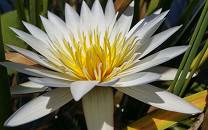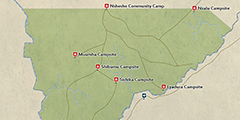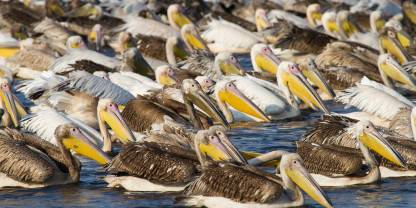Nkasa Rupara National Park (formerly Mamili National Park) is an adventurous and undeveloped destination in the Zambezi Region (formerly Caprivi Strip). Combine it with a trip to Bwabwata National Park for an excellent overall experience. The birding is great, and it’s a stronghold for birdlife and water-loving antelope. The park’s swampy environment makes it inaccessible during the Wet season (November to April).

-
Best Time To Go
- May to September (Dry conditions and little rain)
-
High Season
- July to October (The park never gets crowded)
-
Size
- 320km² / 124mi²
-
Altitude
-
940-955m /3,084-3,133ft
 View Photos
View Photos
 View Photos
+7
Photos
View Photos
+7
Photos
 Open Map
Open Map
Pros & Cons
- Excellent bush vibe
- Buffalo (uncommon elsewhere in Namibia) is present
- Little-visited and adventurous destination
- Fantastic bird watching
- Accommodations limited
- No facilities inside the park
- Tracks are often in poor condition, making driving difficult
- Vehicles should travel in pairs at all times
- The park becomes inaccessible when it floods
Wildlife
You need to work for your sightings in Nkasa Rupara, but there’s lots to see. The park is one of few places in Namibia where buffalo and elephant regularly pass through. The wet habitat is great for antelope such as red lechwe and sitatunga. Wild dogs roam the area, although you have to be lucky to see them, and lions are present in decent numbers. Hippos and Nile crocodiles inhabit the water channels.
More about Nkasa Rupara’s wildlifeScenery
Nkasa Rupara is primarily a swamp or wetland between the Kwando and Linyanti Rivers. There are several overgrown channels that crisscross the marshland. When flooded, it becomes the Namibian version of Botswana’s Okavango Delta, an inaccessible paradise of islands and reed-lined waterways.
Activities
(both guided and self-guided) are the main activity in Nkasa Rupara. If you’re staying in one of the lodges in the area, go for the guided option as you’re likely to see more. On these drives, your main pursuits will be wildlife viewing and birding. Some lodges also offer boat excursions on the park’s waterways and surroundings.
Weather & Climate
Nkasa Rupara has a hot climate, but from May to July, early mornings tend to be chilly and you’ll need warm clothing for . November to April is the Wet season: it usually doesn’t rain all day, but afternoon thunderstorms can be expected.
More about the weather and climateBest Time To Visit
Although rainfall at Nkasa Rupara is not that high, during the Wet season (November to April) it can be enough to close many of the park’s roads. The heat also tends to be oppressive at this time. The Dry season (May to October) is a better time to visit, especially since this is the peak time for wildlife viewing. October can be very hot, but conditions are ideal from May to September.
More about the best time to visit


